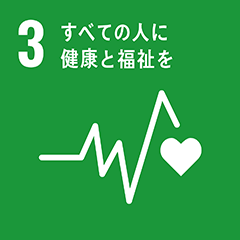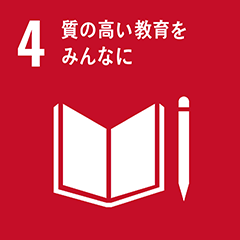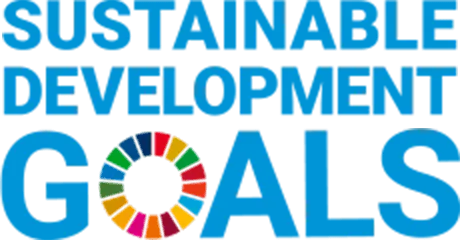Inochi Declaration
It is time to create new ways for children and young people to share their ideas about how to be healthy and happy despite the threat and impact of disasters. By working together and contributing to solutions, they can be empowered to face disaster challenges and be part of a global effort to increase disaster resilience.
The UN Convention on the Rights of the Child states the rights of children to live in a healthy environment, and to contribute to decisions affecting their lives. One of the current major issues affecting the lives of children is the increasing threat of climate-related disasters. Good health and wellbeing, and climate action, have both been identified as sustainable development goals. Any efforts to address these combined issues need to be developed with, by and for children and young people. This approach is consistent with the Sendai Framework for Disaster Risk Reduction*1 and the Nurture Pillar of the Inochi Declaration.
A major risk associated with disasters is long term mental health problems*2, particularly for those who experience more than one disaster*3. Mental health problems can arise from experiencing the disaster event and also the difficulties and changes that occur in the years afterwards including damaged homes, schools and local services which can force families to move away from their communities and support systems. Children and young people who are very worried about climate change may also experience mental health problems*4.
There are many examples of the important contributions children and young people have made to disaster resilience, including the Student Volunteer Army in Aotearoa New Zealand which was initially mobilised by University of Canterbury students using social media following the Christchurch earthquakes. Disaster risk reduction and recovery support programs*5*6 are also important strategies for engaging children and young people in disaster preparedness and guiding them through disaster experiences. However, more evidence is needed to understand the best ways to support their mental health and wellbeing, particularly for groups who may have specific needs such as preschool children, children with disabilities, and those from diverse cultural and ethnic backgrounds.
If there was a consistent way for children and young people to share their thoughts and ideas about disaster resilience, it would help everyone understand the importance of their voices, and it would become normal to include their views and experiences when decisions are being made that impact them. It would also give young people the chance to work together, share new ideas, and learn from each other across different cultures and countries.
The Inochi Forum is committed to advocating for the establishment of tiers of local, regional and international networks of Young Disaster Resilience Leaders as an ongoing responsibility for government and non-government disaster agencies. These leadership groups and networks would help young people become stronger leaders: supporting their sense of empowerment and agency and their opportunities to contribute to community resilience. It is possible to involve younger children as disaster resilience contributors to these networks via supportive contexts such as schools and community settings. There should be ways for all children and young people to contribute including different ages, genders, abilities, family backgrounds and living circumstances.
For this to work, it needs support from adults and other young people and their organisations. These supporters would work together to ensure that Young Disaster Resilience Leaders develop skills to manage stress related to disasters, at the same time as helping others in a safe and trauma informed way. There also needs to be succession planning allowing for new leaders bringing in fresh ideas as the older ones grow up and become leaders in the adult world. Finally, adults in government, health, disaster services and schools would need to be open to learning themselves, creating safe spaces for contributions from children and young people, and listening to what they say so that their ideas help to make real changes.
Setting up these groups can be difficult, especially after a disaster when things are chaotic. Fortunately, researchers and young people with lived experience of disasters in Western Australia have great advice on how to engage young people in disaster risk reduction (https://shorturl.at/lyjKe). Getting started early can make sure things are in place before a disaster occurs. Commemorating past disasters can also be a helpful way to do this – such as the memorials and events held in Kobe, Japan in January 2025 to mark the 30th anniversary of the 1995 Great Hanshin-Awaji Earthquake and engage the next generation in learning and preparedness activities.
The Federal Emergency Management Agency (FEMA) Youth Preparedness Council in the USA and the National Centre of Excellence: Young People & Disasters in Australia demonstrate different ways to establish youth leadership in disaster resilience. By highlighting the success of existing initiatives, and advocating for a more networked approach within and across countries, the Inochi Forum together with the contributors to this action plan, proposes the establishment of Young Disaster Resilience Leader networks. This will encourage adults to understand the needs of children and young people and provide opportunities for their active participation, influencing disaster resilience initiatives and helping to design more effective solutions.
The Inochi Forum proposes that these networks will also encourage children and young people to focus on their own sphere of influence (the things they can control) and, through the networks, together build their future in a climate disrupted world.
[Notes]
*1 The Sendai Framework for Disaster Risk Reduction 2015– 2030
https://recovery.preventionweb.net/ja/the-citizens-guide-to-the-sendai-framework-for-drr-japanese
*2 Newnham EA, Mergelsberg ELP, Chen Y, Kim Y, Gibbs L, Dzidic PL, et al. Long term mental health trajectories after disasters and pandemics: A multilingual systematic review of prevalence, risk and protective factors. Clinical Psychology Review. 2022;97: 102203. doi: 10.1016/j.cpr.2022.102203.
*3 Leppold C, Gibbs L, Block K, Reifels L, Quinn P. Public health implications of multiple disaster exposures The Lancet Public Health. 2022;7:e274-86.
https://doi.org/10.1016/S2468667(21)00255-3.
*4 Léger-Goodes T, Malboeuf-Hurtubise C, Mastine T, Généreux M, Paradis PO, Camden C. Eco-anxiety in children: A scoping review of the mental health impacts of the awareness of climate change. Frontiers in Psychology. 2022;13:872544. doi: 10.3389/fpsyg.2022.
*5 Amri A, Haynes K, Bird DK, Ronan K. Bridging the divide between studies on disaster risk reduction education and child-centred disaster risk reduction: a critical review. Children’s Geographies. 2017;16(3):239-51.
https://doi.org/10.1080/14733285.2017.1358448.
*6 Gibbs L, Marinkovic K, Nursey J, Tong LA, Tekin E, Ulubasoglu M, et al. Child and adolescent psychosocial support programs following natural disasters – a scoping review of emerging evidence. Current Psychiatry Reports. 2021;23(12):23(12):82. doi: 10.1007/s11920-021-01293-1.
[Action Platform]
Medical and Welfare
[SDGs]




